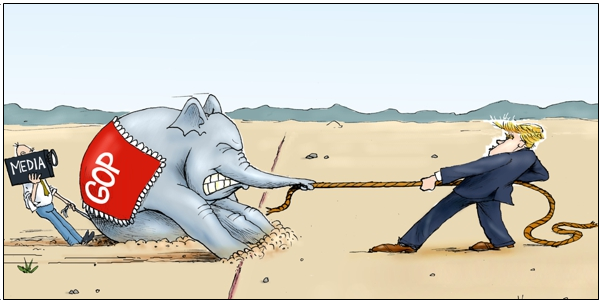White House Office of Management and Budget Director Mick Mulvaney has said the White House has not decided its plan for an upcoming vote extending the debt ceiling.
“We haven’t settled on a final way to address the debt ceiling any more than the Hill has,” Mulvaney said to reporters on June 15.
At issue in the White House among President Donald Trump’s team are those who prefer a so-called “clean” vote on extending or suspending the debt ceiling with no strings attached, versus those who would like to see budgetary reforms or spending cuts included in the vote.
The fact that there’s even a question of how to proceed on the debt limit is because of its fundamental feature: When the debt ceiling is reached, there is not enough money to spend on all of the parts of the $3.8 trillion budget and to meet existing debt obligations including paying interest owed on the nearly $20 trillion national debt.
As a result, every time the debt limit came up in Congress during the Obama administration, the momentum is always in favor of voting yes, because voting no is perceived — rightly or wrongly — as tantamount to defaulting on the debt. As a result, it was no effective check on the unbridled expansion of the national debt.
But what if that pressure could somehow be neutralized?
Now that the President is Donald Trump, the White House could promise to prioritize payments in the event the debt ceiling was reached under his Article II authority to execute the laws to ensure that there would be neither default on the debt — nor on other deemed essential obligations like the military, veterans, Social Security, Medicare, Medicaid and whatever else the administration thought was necessary to be funded immediately.
Longer term, Congress could similarly codify debt prioritization so that no future President could ever again threaten default like former President Barack Obama did. Such a law would allow Congress or the President for that matter to be assertive about adding things like budgetary reform or spending cuts or you name it as the price for further expanding the national debt. At least there would be a choice, a bargaining chip, if you will, for taxpayers and their representatives in Congress.
This would be an assertion of Congress’ Article I power of the purse authority, and fix the debt ceiling — now 100-years-old — so it could work the way it is intended to.
This would automatically change the complexion of all future debates on the debt ceiling. By taking default off of the table for good, the only consequence of reaching the debt limit would be that the budget would be automatically balanced — temporarily — while the debate on extending it ensued.
Naturally, the Washington, D.C. establishment would hate the idea, since it would potentially be used to limit the size and scope of the federal government. There would be no way to extort Congress into voting to increase the debt limit. Instead, Congressional leaders would finally have a choice about whether even extending borrowing authority was fiscally prudent.
They could say no, then.
And what if Congress or the President decided not to raise the debt ceiling? The swamp would lose all its power, that’s what. Which is why under normal circumstances, such a proposal would never be allowed to pass.
Yet, under normal circumstances, such an unorthodox candidate like Donald Trump would have never been nominated to be President, let alone elected.
Beyond political considerations, these are not normal circumstances.
Since 2000, the nearly $20 trillion national debt has exploded, growing a whopping 7.7 percent a year.
But nominally — prior to adjusting for inflation — the U.S. economy has only grown at an average annual 3.94 percent rate.
If those trends persist during the Trump administration, the debt could be $37 trillion by the time President Donald Trump hypothetically leaves office after the 2024 election campaign.
By then, the debt to GDP ratio — now 106 percent — could grow dramatically, to 142 percent: $36.7 trillion debt to a $25.8 trillion economy.
After 20 years of excessive borrowing — all but guaranteed as Baby Boomers fully receive their Social Security, Medicare and Medicaid benefits — the national debt would be $93 trillion.
And if the economy continues at its current anemic rate, the GDP would only be $40 trillion — a debt to GDP ratio of 232 percent.
Is that the legacy members of Congress wish to leave their children and grandchildren? With President Trump, there’s a chance to finally rein in the debt, but they must work together to take default off the table — for good. This will set the table for future debt battles, where those who prefer fiscal restraint will finally have the upper hand.
Robert Romano is the senior editor of Americans for Limited Government.







